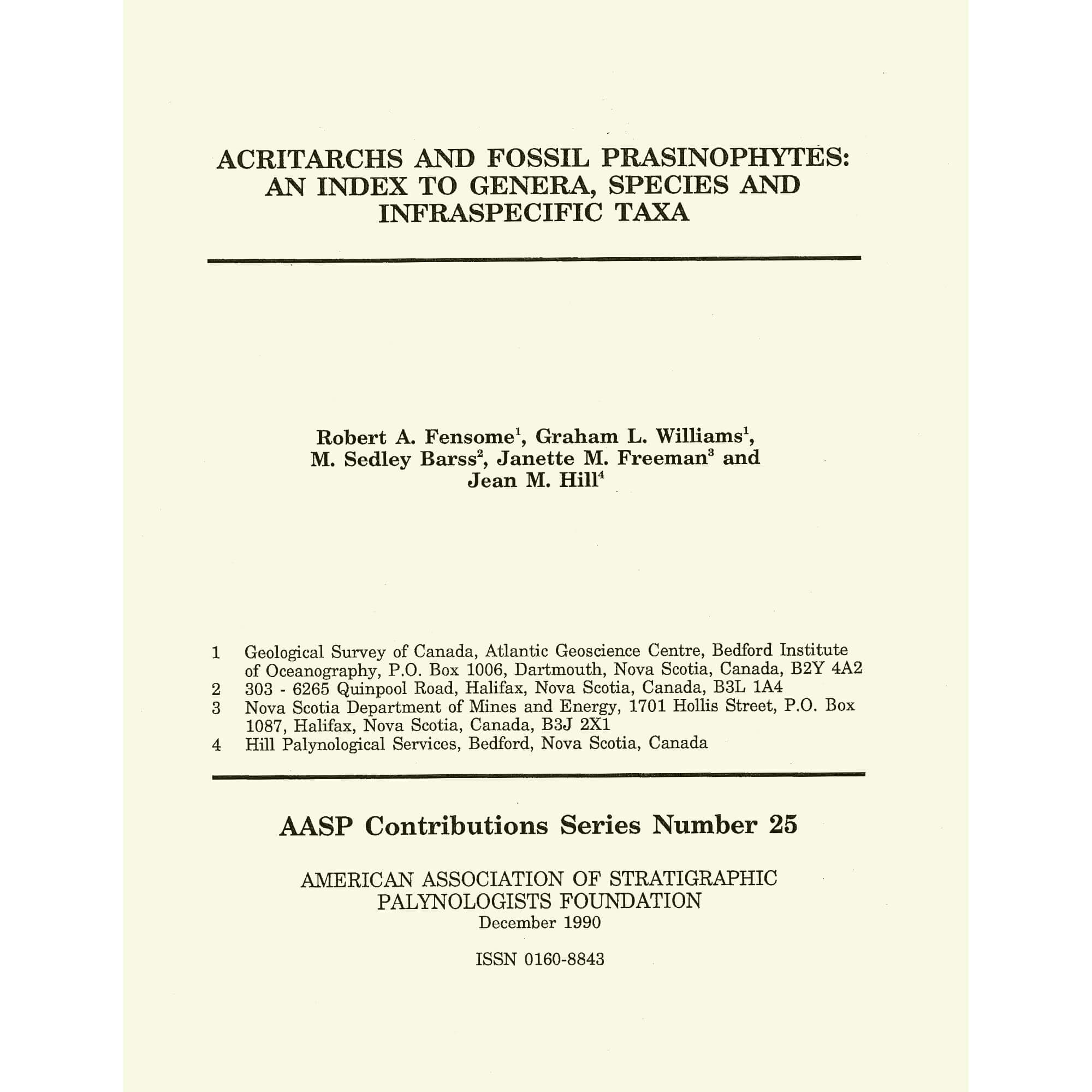Contributions Series Nr. 25 (PDF)
$12.00
Acritarchs and Fossil Prasinophytes: An Index to Genera, Species and Intraspecific Taxa
Robert A. Fensome, Graham L. Williams, M. Sedley Barss, Janette M. Freeman, and Jean M. Hill
1990
PDF only
775 pp.
Description
Abstract
Acritarchs are monovesiculate organic-walled microfossils of unknown affinity and are usually studied as constituents of palynological assemblages. Acritarchs are one of the longest ranging fossil groups, being known from the Precambrian and throughout the Phanerozoic, and appear to have attained their dominance in the Early Paleozoic. Commonly acritarchs are associated with prasinophytes, which are a division of green algae. Since acritarchs and fossil prasinophytes merge morphologically, they are treated together in this index and are classified as plants, their names thus being subjected to the International Code of Botanical Nomenclature.
Acritarchs and fossil prasinophytes are important biostratigraphic indicators, being of particular importance in Proterozoic and Lower Paleozoic strata. They are also used in paleoenvironmental reconstructions and in evolutionary and maturation studies. Their burgeoning use in recent decades has led to a great profusion of taxon names, many of which have been overlooked or neglected because of the problems of pursuing the extensive international literature. Stability, consistent application and full use of the available taxonomic observations and nomenclature play a vital role in the advancement of knowledge of any group of organisms. Consequently, this index of genera, species and infraspecific taxa has been prepared in an attempt to provide an initial basis for nomenclatural and taxonomic stability in the study of acritarchs and fossil prasinophytes.
In this index, we alphabetically list all genera, species, subspecies, varietates and formae of acritarchs and fossil prasinophytes known to us by the 1st January 1990. The index is in four parts: the main part lists all generic names whose types are acritarchs and fossil prasinophytes, as well as the names of their included species and infraspecific taxa (a complete citation being provided for all entries in this section); Appendix A includes any names relevant to this index whose nomenclatural status we have not been able to verify; Appendix B includes generic names whose types are not acritarchs or prasinophytes but which are relevant to this index or which include taxa relevant to this index; and Appendix C lists the nomenclatural changes proposed in this work.
We have rigorously applied the International Code of Botanical Nomenclature and have provided a discussion of our interpretation of this Code. We have avoided making subjective taxonomic decisions but instead, for this first edition, we have relied on the last taxonomic opinion in the literature. This policy has been adopted in order to avoid “taking sides” in any of the taxonomic debates that currently involve acritarchs and fossil prasinophytes. We believe that these debates and the innumerable taxonomic problems that concern acritarchs and fossil prasinophytes are, in part, the result of, or are exacerbated by, the lack of a current, complete nomenclatural index. Thus, we hope that acritarch and fossil prasinophyte workers will view this index as a starting point for resolving taxonomic problems.
The main index has a complete cross-referencing of information regarding authorship, typification, nomenclatural history and currently accepted synonymies. Hence, taxonomists who disagree with the assignments indicated herein should still be able to use this index with a minimum of inconvenience.
